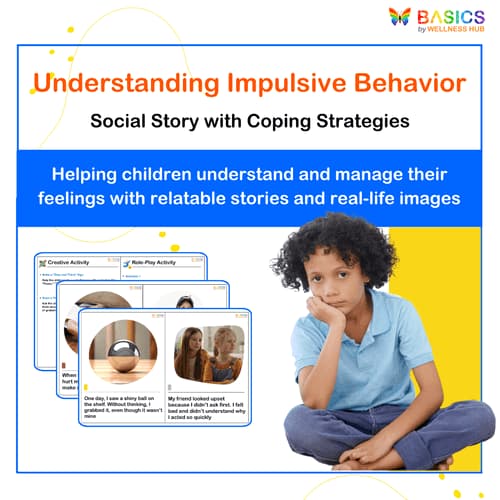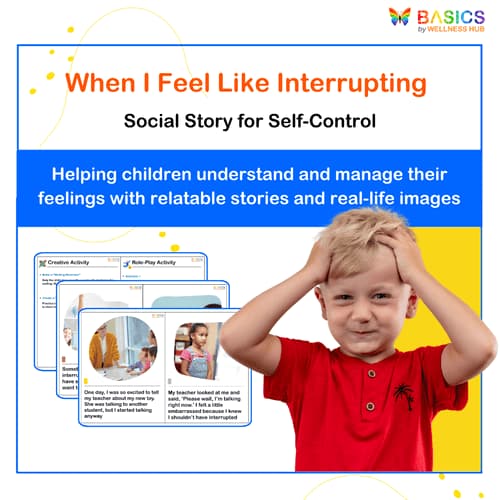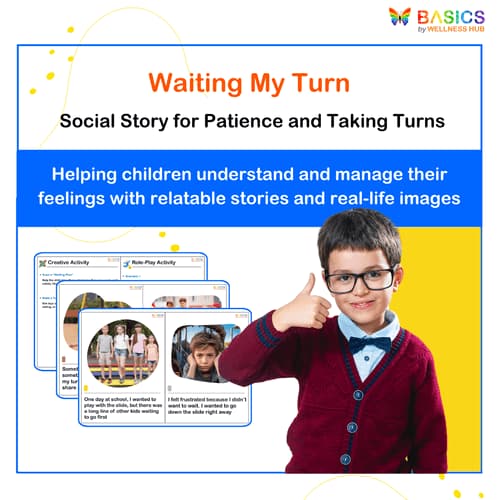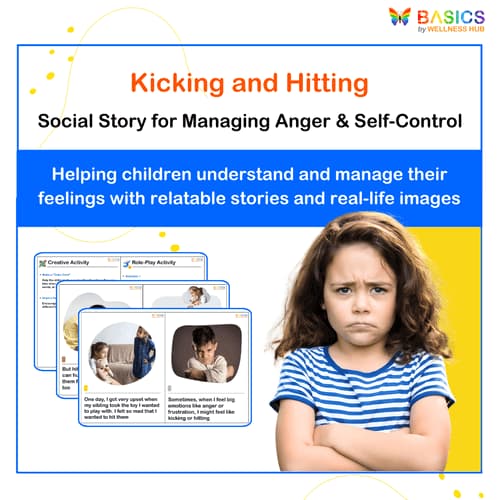





Action Flashcards for Kids: Learn Everyday Activities
₹80
₹160
50% off
0 (0 ratings)
Grade Levels
Pre-K - Grade 1 (Ages 3-6)
Content Overview
Format: Printable PDF, Total Pages: 15, Features: 60 high-quality images of actions with names.
Categories
Pages from the Resource
Introduce your child to everyday actions with Action Flashcards for Kids! This 15-page printable PDF is packed with colorful and engaging flashcards, designed to teach young learners about common activities. Each page includes four vividly illustrated cards showcasing actions like eating, running, and playing, making learning fun and interactive. Perfect for enhancing vocabulary, building cognitive skills, and promoting early learning, these flashcards are ideal for preschoolers and kindergarten-aged children. Use them at home or in the classroom to foster quick and effective education with a hands-on, visual approach.

Page 1

Page 2
What Users Say
0
0 ratings
5
0+
4
0+
3
0+
2
0+
1
0+
5 Stars
Product is Good to use.
10 months ago
Varsha Parent
Similar Products

Understanding Impulsive Behavior: Social Story with Coping Strategies
₹ 80.00
₹ 160.00
50% off
4.9 (42 ratings)

When I Feel Like Interrupting – Social Story for Self-Control
₹ 80.00
₹ 160.00
50% off
4.8 (60 ratings)

Waiting My Turn – Social Story for Patience and Taking Turns
₹ 80.00
₹ 160.00
50% off
4.7 (56 ratings)

Kicking and Hitting – Social Story for Managing Anger & Self-Control
₹ 80.00
₹ 160.00
50% off
4.6 (52 ratings)

Understanding Swear Words – Social Story for Respectful Communication
₹ 80.00
₹ 160.00
50% off
4.9 (48 ratings)
About the Product
Purpose of the Flashcards: "Actions Flashcards for Kids: Learn Everyday Activities" is designed to engage young learners by introducing them to a variety of daily activities through visually appealing and educational flashcards. These tools aim to enhance early vocabulary development and provide a foundation for understanding common actions, making learning both fun and informative.
Target Audience: This resource is ideally suited for parents of preschoolers, early childhood educators, and special education professionals who seek effective, interactive tools to aid in the cognitive and language development of young children.
Product Details
Content Description: This product includes a comprehensive set of 60 action-oriented flashcards, grouped into a 15-page high-quality PDF. Each page showcases four vibrant, easy-to-understand images depicting everyday activities, clearly labeled to assist in word recognition and language acquisition.
Image Quality and Design: Crafted with attention to detail, each flashcard features high-resolution images that capture the essence of daily actions in a child-friendly manner. The design is clean and focused, with minimal distractions, to ensure that young learners stay engaged and absorb the educational content effectively.
Educational Benefits
Cognitive Development: These flashcards stimulate cognitive skills by helping children make connections between pictures and their corresponding actions, enhancing their ability to process and categorize information.
Language Skills: Regular interaction with the flashcards promotes vocabulary expansion and language skills, as children learn to identify and articulate the names of various everyday actions. This foundation is crucial for developing effective communication skills.
Behavioral Engagement: By encouraging children to mimic the actions shown on the cards, these flashcards also support the development of motor skills and behavioral understanding, which are integral to early childhood education.
Instructions for Use
Printing Recommendations: For optimal durability and clarity, print the flashcards on thick, glossy cardstock. Use a high-quality color printer setting to ensure the images are bright and engaging.
Cutting and Preparation: Each card should be cut along the clearly marked borders. Laminating the cards after cutting is highly recommended to protect them from wear and tear, making them suitable for repeated use in various educational settings.
Utilization Tips: Introduce the flashcards gradually to avoid overwhelming the child. Begin with actions that the child is likely already familiar with to build confidence. Gradually introduce new and more complex actions to challenge their understanding and retention. Use the flashcards in different settings—both in structured educational environments and in casual, play-based activities to maximize their learning potential.
Activities Using the Resource
Interactive Matching Games: Challenge children to match flashcards with real-world objects or pictures around the room that depict the action, enhancing their observation skills and reinforcing their learning.
Action-Based Role Play: Encourage children to pick a card and act out the action. This activity supports kinesthetic learning and helps children connect words to physical activities.
Sorting and Categorization: Have children sort the flashcards into categories, such as indoor and outdoor activities, or actions that involve different parts of the body. This develops critical thinking and organizational skills.
Storytelling Sessions: Use the flashcards as prompts for storytelling. Ask a child to draw several cards at random and then create a story that incorporates all the depicted actions. This fosters creativity and narrative skills.
Flashcard Relay: Set up a fun relay game where children run to a flashcard placed at a distance, perform the action, and run back. This can be an engaging way for kids to learn through movement and play.
Memory and Recall Tests: Display a series of flashcards briefly, then hide them and ask children to recall the actions seen. This enhances memory and attention to detail.
FAQs
Q1: How can I ensure that the flashcards remain durable over time?
A1: Laminating the flashcards after cutting them out is the best way to ensure they withstand frequent handling, especially in a classroom setting.
Q2: Are these flashcards appropriate for non-verbal or minimally verbal children?
A2: Yes, the visual nature of these flashcards makes them an excellent resource for non-verbal or minimally verbal children, helping them to learn and communicate actions effectively.
Q3: Can these flashcards be integrated into existing educational curriculum?
A3: Absolutely, these flashcards are versatile and can be incorporated into various educational themes and curriculums, particularly those focusing on language development and physical activities.
Q4: What are some ways to make the flashcard activities more challenging for advanced learners?
A4: For advanced learners, combine multiple flashcards to form complex sentences or use them to create problem-solving activities that require linking several actions together.
Q5: How often should I introduce new flashcards to the children?
A5: The pace at which new flashcards are introduced should depend on the child’s learning speed and comprehension. Start with a few cards and gradually add more as the child becomes more comfortable with the content.
Usage Rights and Restrictions
Personal Use Agreement: These flashcards are intended solely for the use of the purchaser, either at home or in a single classroom. They may not be shared, distributed, or reproduced for other classes or individuals without additional purchases. Commercial use or mass distribution is strictly prohibited.
Conclusion
Thank you for choosing our Actions Flashcards for Kids. We are confident that these resources will provide valuable learning experiences and foster a deeper understanding of everyday activities. We wish you and your young learners great success and enjoyment in exploring and learning with these flashcards. Let the journey of discovery begin!



